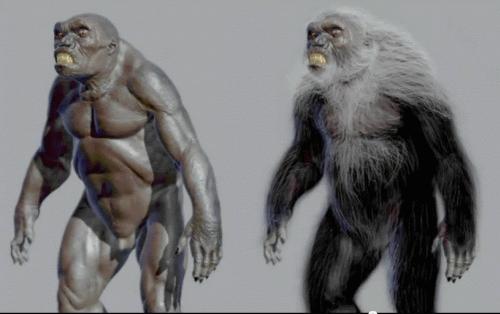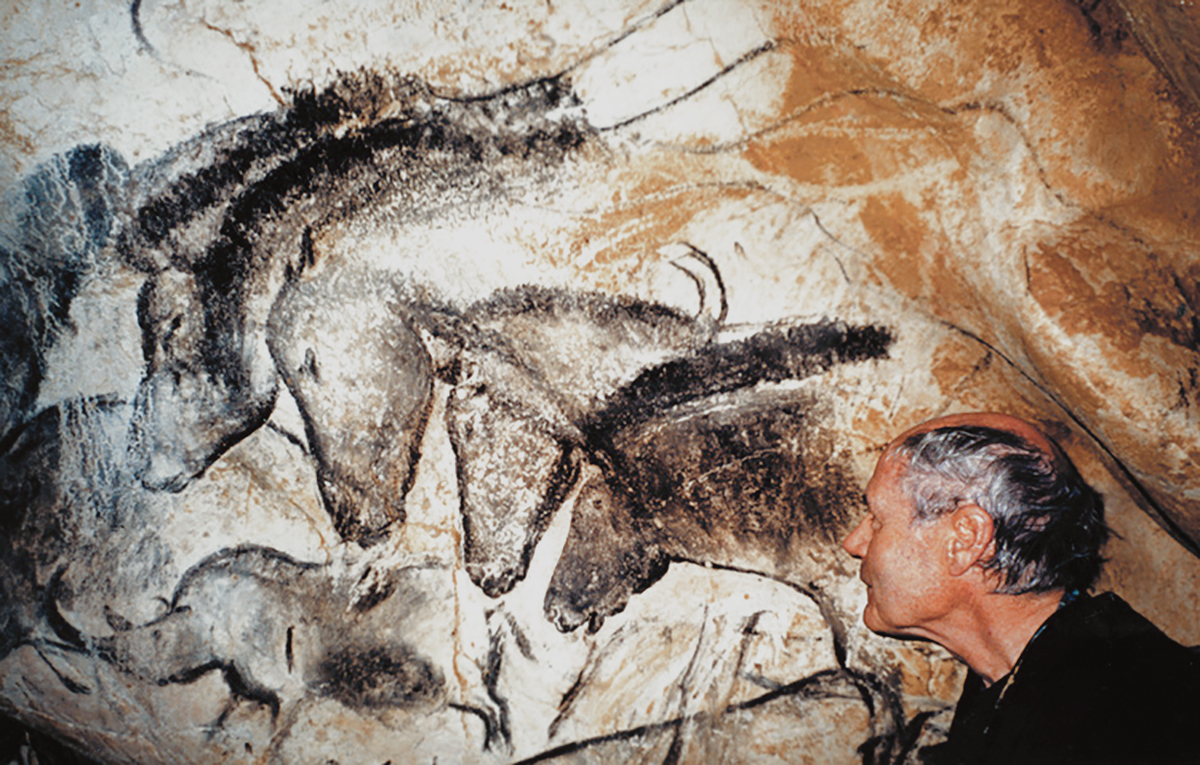with links fixed.....
This year's new, impoved homo (Naledi)...
How many times does an intelligent person need to see something before he figures it out.....
"This years BIGGER, BOLDER hominid find is going to revolutionize everything we thought we knew about human evolution and ancestry!!!!!!!!!!!"
All such claims are BS. Humans are related to hominids only via similar design. Humans are not descended from hominids and never interbred with hominids.
Beyond some point in time at least, hominids were land predators. At least any of the hominids who anybody might claim humans were descended from; nobody has ever claimed that humans are descended from any of the little monkey-like hominids like "Lucy", that is, if "Lucy" actually ever was anything other than a monkey:
https://www.youtube.com/watch?v=cENm2rSBleI
In fact Neanderthal DNA turning out to be roughly halfway between ours and that of a chimpanzee has eliminated the Neanderthal as a plausible human ancestor altogether:
http://humanorigins.si.edu/evidence/genetics/ancient-dna-and-neanderthals/neanderthal-mitochondrial-dna
and there are other reasons for rejecting the Neanderthal as a human ancestor as well:
http://www.cbsnews.com/news/neanderthals-not-human-ancestors/
Now, the normal way in which scientists, who ought to know better, try to deal with this is to claim that humans and the Neanderthal must be "cousins" with a "common ancestor" somewhere back around 500,000 years ago and that common ancestor is normally taken to be Heidelbergensis, a type of Homo Erectus. Apparently advanced degrees in paleontology don't require courses in basic logic these days; the problem is that "too genetically remote to be ancestral to" is a transitive relationship. Heidelbergensis was substantially more remote from us THAN the Neanderthal and would probably frighten a Neanderthal about as badly as a Neanderthal would frighten one of us.
Danny Vendramini's Neanderthal Reconstruction:

Homo Heidelbergensis:

That leaves exactly one hominid on the planet which anybody might want to try to claim humans evolved from, which would be the more gracile Skhul/Qafzeh (S/Q) hominids which figure in Danny Vendramini's theory ("Them and Us"). Vendramini claims that predation BY Neanderthals drove those more gracile hominids into a very fast Gould/Eldredge type of process of evolution into Cro Magnon man.
There is sufficient evidence to reject that claim even without going into questions of human aquatic adaptations; the claim does not explain the total lack of evidence for any sort of a run-up to Cro Magnon culture. James Shreve, in his big article "The Neanderthal Peace" in Discover Magazine 1996, notes:
http://discovermagazine.com/1995/sep/theneanderthalpe558
"In Europe a new, efficient way of producing blades from a flint core appeared as part of the cultural explosion that coincided with the appearance of the Cro- Magnon people. Here in the Levant, however, the arrival of anatomically modern humans [Shreve's term for S/Q hominids] was marked by no fancy new tools, not to mention no painted caves, beaded necklaces, or other evidence of exploding Cro-Magnon couture. In this part of the world, how modern a hominid looked in its body said nothing about how modernly it behaved. "
The problem in the lack of a run-up to Cro-Magnon culture is that Cro Magnon man appeared on Earth like BANG, right now, with everything we know about his artwork, fancy tools and weaponry and what not intact from day one.
One thing scholars all agree on is that whatever caused Cro Magnon people to appear on this planet when they did was not gradual. Vendramini ("Them and Us") notes :
Quote:“The speed of the Upper Palaeolithic revolution in the Levant was also breathtaking. Anthropologists Ofer Bar-Yosef and Bernard Vandermeersch:
“Between 40,000 and 45,000 years ago the material culture of western Eurasia changed more than it had during the previous million years. This efflorescence of technological and artistic creativity signifies the emergence of the first culture that observers today would recognize as distinctly human, marked as it was by unceasing invention and variety. During that brief period of 5,000 or so years, the stone tool kit, unchanged in its essential form for ages, suddenly began to differentiate wildly from century to century and from region to region. Why it happened and why it happened when it did constitute two of the greatest outstanding problems in paleoanthropology.”
Likewise Dwardu Cardona ("Flare Star"):
Quote:"Where and how the Cro-Magnons first arose remains unknown. Their appearance, however, coincided with the most bitter phase of the ice age. There is, however, no doubt that they were more advanced, more sophisticated, than the Neanderthals with whom they shared the land. Living in larger and more organized groups than had earlier humans, Cro Magnon peoples spread out until they populated most of the world. Their tools, made of bone, stone, and even wood, were carved into harpoons, awls, and fish hooks. They were presumably able hunters although, as with the Neanderthals, they would also have foraged to gather edible plants, roots, and wild vegetables.
"The only problem here is that, as far as can be told, the Cro Magnons seem to have arrived on the scene without leaving a single trace of their evolutionary ancestors. (emphasis ours) 'When the first Cro Magnons arrived in Europe some 40,000 years ago', Ian Tattersall observed,
Quote: 'they evidently brought with them more or less the entire panoply of behaviors that distinguishes modern humans from every other species that has ever existed.'"
The Cro Magnon artwork which we observe in caves including Chauvet and Lascaux in particular is exquisite and would require some very long period of development. A group of hominids supposedly morphing into some sort of a creature more capable of resisting attack from Neanderthals would not develop artwork like that in any sort of a hurry:

And then you get into questions of aquatic adaptation.
Hominids, or at least the more recent and interesting ones, were land predators, with everything a land predator needs: fur, dense bones and musculature, weaponry in the form of stout thrusting spears with napped points made of hard stone, excellent night vision (the huge hominid eye sockets), and an excellent sense of smell.
Humans show most if not all of the features you associate with aquatic mammals: legs being the major limbs (an adaptation for swimming and wading), voluntary control of breathing (an adaptation for swimming which monkeys and apes don't have), lack of a decent sense of smell which aquatic mammals don't really need, use of fat for insulation, aquatic mammal behavior patterns including face-to-face sex, and a number of other things.
For any hominid to have ever evolved into a human, that hominid would have to have lost everything he needed to live. He'd have to have lost:
- his fur, while ice ages were going on
- his night vision while trying to make it on land with 500+ lb predators walking around all over the place, which COULD see in the dark very nicely
- his sense of smell
And that third/final item would have been instantly fatal.
The massive/overwhelming new NASA evidence pouring in of past habitation of Mars would alone stand as an overwhelming argument against human evolution from hominids on Earth. Any sort of a FaceBook search on 'mars images' will turn up more of that sort of thing than you could peruse in a year. There appear to have been more than one body outside our own planet which was inhabited by humans in prehistoric times and it's highly likely that one such place would have been more suitable to humans as a home world than Earth was.
An original human home world would have had to be bright (the relatively tiny human eyes), wet (the aquatic adaptations), and safe both from sea monsters and from cosmic radiation. The Neanderthal and other hominids were well adapted to this planet as it stood some 50,000 years ago; humans would not have been.
What we know about Cro magnon man is totally compatible with his having somehow or other arrived here from some other body in our own system. It is totally incompatible with his having evolved from hominids.